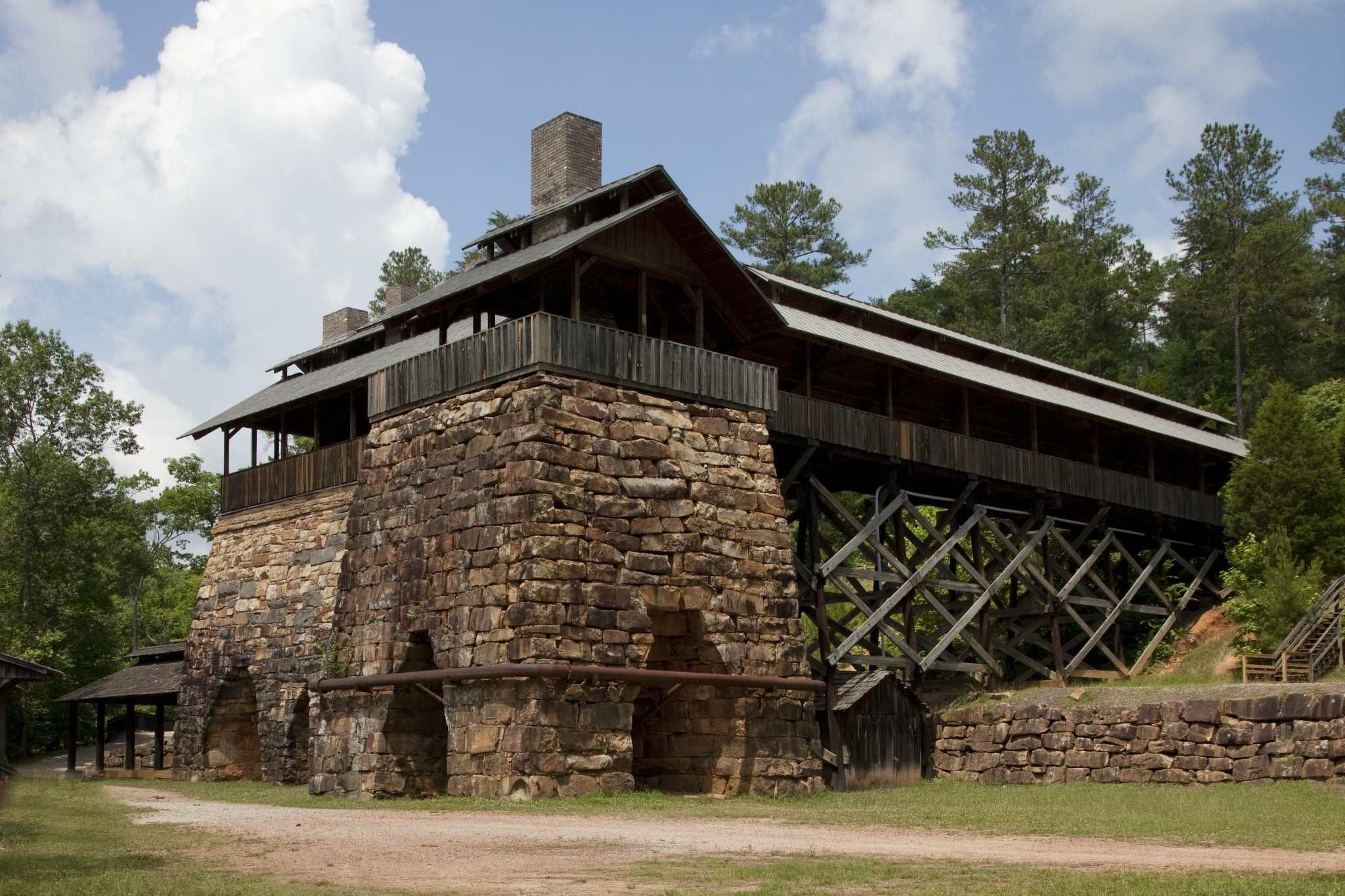Hidden Iron Furnaces Of Alabama’s Tannehill

Have you ever wondered about the hidden gems of Alabama? One such treasure is the Tannehill Ironworks Historical State Park. This park is home to the Tannehill Iron Furnaces, a key part of Alabama's rich history. These furnaces played a crucial role during the Civil War, producing iron for the Confederacy. Today, visitors can explore the remains of these historic structures, hike scenic trails, and even try their hand at blacksmithing. Whether you're a history buff or just looking for a unique day trip, Tannehill offers a fascinating glimpse into the past. Ready to step back in time? Let's dive into the wonders of Tannehill Ironworks!
Hidden Iron Furnaces of Alabama's Tannehill
Tannehill Ironworks Historical State Park in Alabama is a treasure trove of history. Nestled in the heart of the state, this park is home to several hidden iron furnaces that played a crucial role during the Civil War. Let's explore some of these fascinating sites.
1. Tannehill No. 1 Furnace
The Tannehill No. 1 Furnace stands as a testament to the ingenuity of 19th-century ironworkers. Built in 1859, this furnace was one of the first in the area.
- Historical Significance: Produced iron for Confederate weapons.
- Unique Features: Stone structure with a towering chimney.
- Visitor Tip: Check out the nearby museum for more context.
2. Tannehill No. 2 Furnace
Just a short walk from the first furnace, Tannehill No. 2 offers another glimpse into the past. Constructed in 1862, it ramped up production during the war.
- Historical Significance: Helped meet the high demand for iron.
- Unique Features: Larger than No. 1, with intricate brickwork.
- Visitor Tip: Visit during a reenactment event for a lively experience.
3. Roupes Valley Furnace
Roupes Valley Furnace, also known as the Tannehill No. 3, is a hidden gem within the park. Built in 1863, it was the last of the three furnaces constructed.
- Historical Significance: Last furnace built before the end of the Civil War.
- Unique Features: Located in a more secluded area, offering a peaceful visit.
- Visitor Tip: Bring a picnic and enjoy the serene surroundings.
4. The Foundry
The Foundry, though not a furnace, played a vital role in the iron production process. It was here that molten iron was cast into various shapes.
- Historical Significance: Essential for creating tools and weapons.
- Unique Features: Remnants of casting molds and tools.
- Visitor Tip: Participate in a blacksmithing workshop to see the process in action.
5. The Ironworks Museum
While not a furnace, the Ironworks Museum provides a comprehensive overview of the park's history. Exhibits include artifacts, photographs, and detailed explanations of the iron-making process.
- Historical Significance: Offers context and depth to the furnace sites.
- Unique Features: Interactive displays and knowledgeable staff.
- Visitor Tip: Start your visit here to gain a better understanding of the park's significance.
6. The Slave Quarters
The Slave Quarters, located near the furnaces, offer a sobering reminder of the human cost of iron production. These quarters housed the enslaved people who worked tirelessly at the furnaces.
- Historical Significance: Highlights the contributions and hardships of enslaved workers.
- Unique Features: Restored cabins and interpretive signs.
- Visitor Tip: Reflect on the history and pay respects to those who lived and worked here.
7. The Gristmill
The Gristmill, while primarily used for grinding grain, was an integral part of the Tannehill community. It provided food for the workers and their families.
- Historical Significance: Supported the ironworkers and their families.
- Unique Features: Still operational, offering a glimpse into 19th-century life.
- Visitor Tip: Purchase freshly ground cornmeal as a unique souvenir.
8. The Pioneer Farm
The Pioneer Farm showcases the agricultural practices of the time. It includes a variety of crops and livestock, demonstrating how the community sustained itself.
- Historical Significance: Illustrates the self-sufficiency of the ironworking community.
- Unique Features: Live demonstrations of farming techniques.
- Visitor Tip: Engage with the farm animals and learn about historical farming methods.
9. The Nature Trails
The Nature Trails winding through the park offer a chance to explore the natural beauty of the area. These trails connect many of the historical sites, providing a scenic route between them.
- Historical Significance: Paths used by workers and residents.
- Unique Features: Diverse flora and fauna, with interpretive signs along the way.
- Visitor Tip: Wear comfortable shoes and bring a camera for stunning nature shots.
10. The Campgrounds
The Campgrounds at Tannehill provide a perfect spot to extend your visit. With modern amenities and a peaceful setting, it's an ideal place to relax after a day of exploration.
- Historical Significance: Area where workers and families lived.
- Unique Features: Blend of historical ambiance and modern comfort.
- Visitor Tip: Reserve a spot early, especially during peak seasons.
Discovering Alabama's Hidden Iron Furnaces
Exploring Alabama's hidden iron furnaces at Tannehill offers a unique glimpse into the past. These historical sites, surrounded by lush forests and scenic trails, provide an educational experience for history buffs and nature lovers alike. Walking through the remnants of these old furnaces, you can almost hear the echoes of the bustling industry that once thrived here.
Tannehill's iron furnaces are more than just relics; they are a testament to the ingenuity and hard work of those who built them. Visiting these sites not only enriches your knowledge of Alabama's industrial history but also allows you to appreciate the natural beauty of the area. Whether you're a local or a visitor, taking the time to explore these hidden gems will leave you with a deeper understanding of the state's rich heritage.

